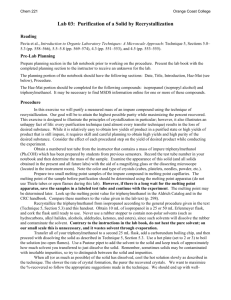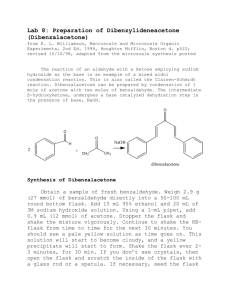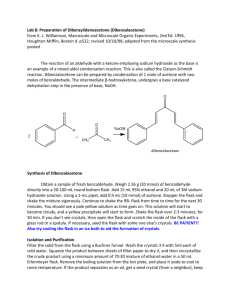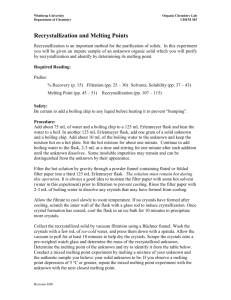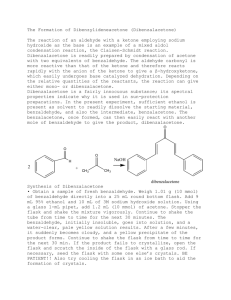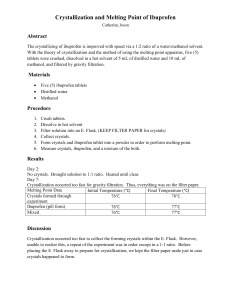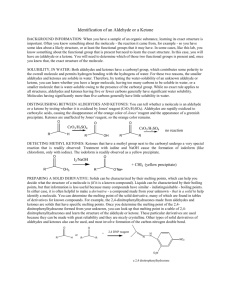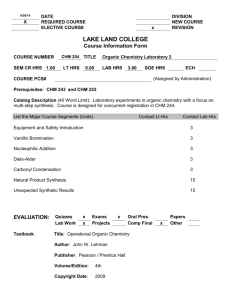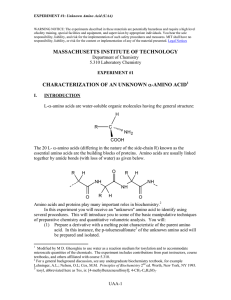N-ch3-17 - Creative Chemistry
advertisement
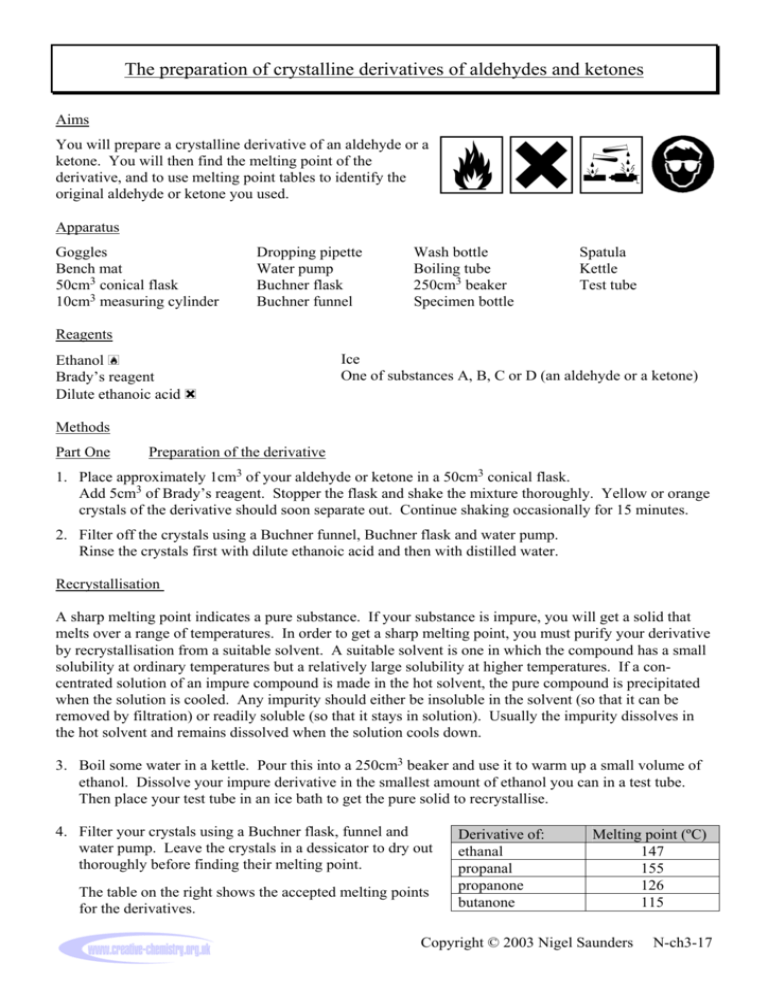
The preparation of crystalline derivatives of aldehydes and ketones Aims You will prepare a crystalline derivative of an aldehyde or a ketone. You will then find the melting point of the derivative, and to use melting point tables to identify the original aldehyde or ketone you used. Apparatus Goggles Bench mat 50cm3 conical flask 10cm3 measuring cylinder Dropping pipette Water pump Buchner flask Buchner funnel Wash bottle Boiling tube 250cm3 beaker Specimen bottle Spatula Kettle Test tube Reagents Ethanol Brady’s reagent Dilute ethanoic acid Ice One of substances A, B, C or D (an aldehyde or a ketone) Methods Part One Preparation of the derivative 1. Place approximately 1cm3 of your aldehyde or ketone in a 50cm3 conical flask. Add 5cm3 of Brady’s reagent. Stopper the flask and shake the mixture thoroughly. Yellow or orange crystals of the derivative should soon separate out. Continue shaking occasionally for 15 minutes. 2. Filter off the crystals using a Buchner funnel, Buchner flask and water pump. Rinse the crystals first with dilute ethanoic acid and then with distilled water. Recrystallisation A sharp melting point indicates a pure substance. If your substance is impure, you will get a solid that melts over a range of temperatures. In order to get a sharp melting point, you must purify your derivative by recrystallisation from a suitable solvent. A suitable solvent is one in which the compound has a small solubility at ordinary temperatures but a relatively large solubility at higher temperatures. If a concentrated solution of an impure compound is made in the hot solvent, the pure compound is precipitated when the solution is cooled. Any impurity should either be insoluble in the solvent (so that it can be removed by filtration) or readily soluble (so that it stays in solution). Usually the impurity dissolves in the hot solvent and remains dissolved when the solution cools down. 3. Boil some water in a kettle. Pour this into a 250cm3 beaker and use it to warm up a small volume of ethanol. Dissolve your impure derivative in the smallest amount of ethanol you can in a test tube. Then place your test tube in an ice bath to get the pure solid to recrystallise. 4. Filter your crystals using a Buchner flask, funnel and water pump. Leave the crystals in a dessicator to dry out thoroughly before finding their melting point. The table on the right shows the accepted melting points for the derivatives. Derivative of: ethanal propanal propanone butanone Melting point (ºC) 147 155 126 115 Copyright © 2003 Nigel Saunders N-ch3-17

